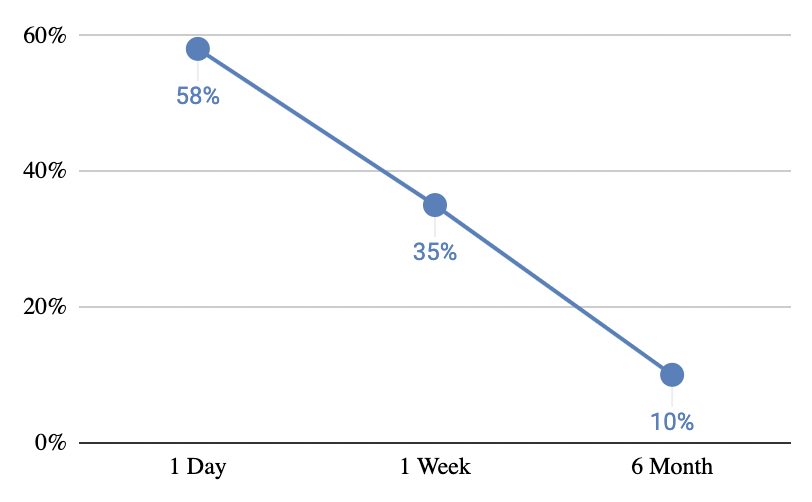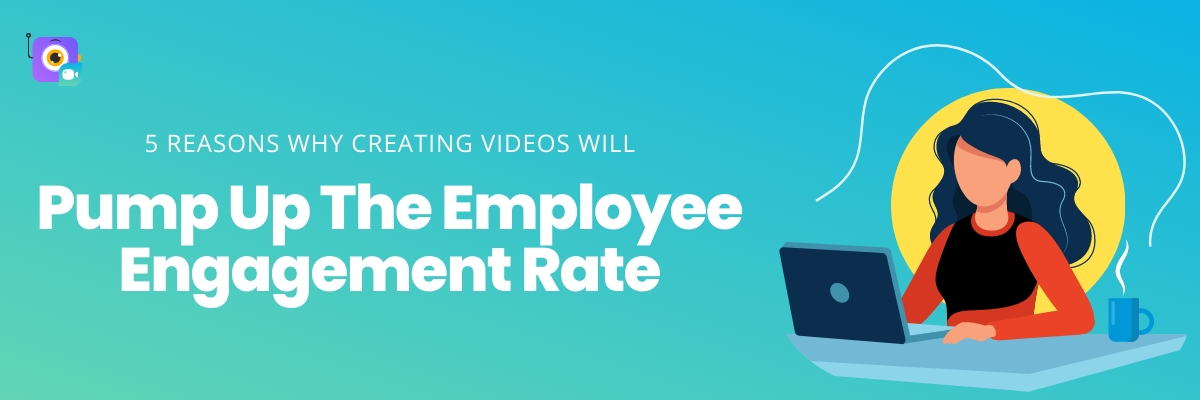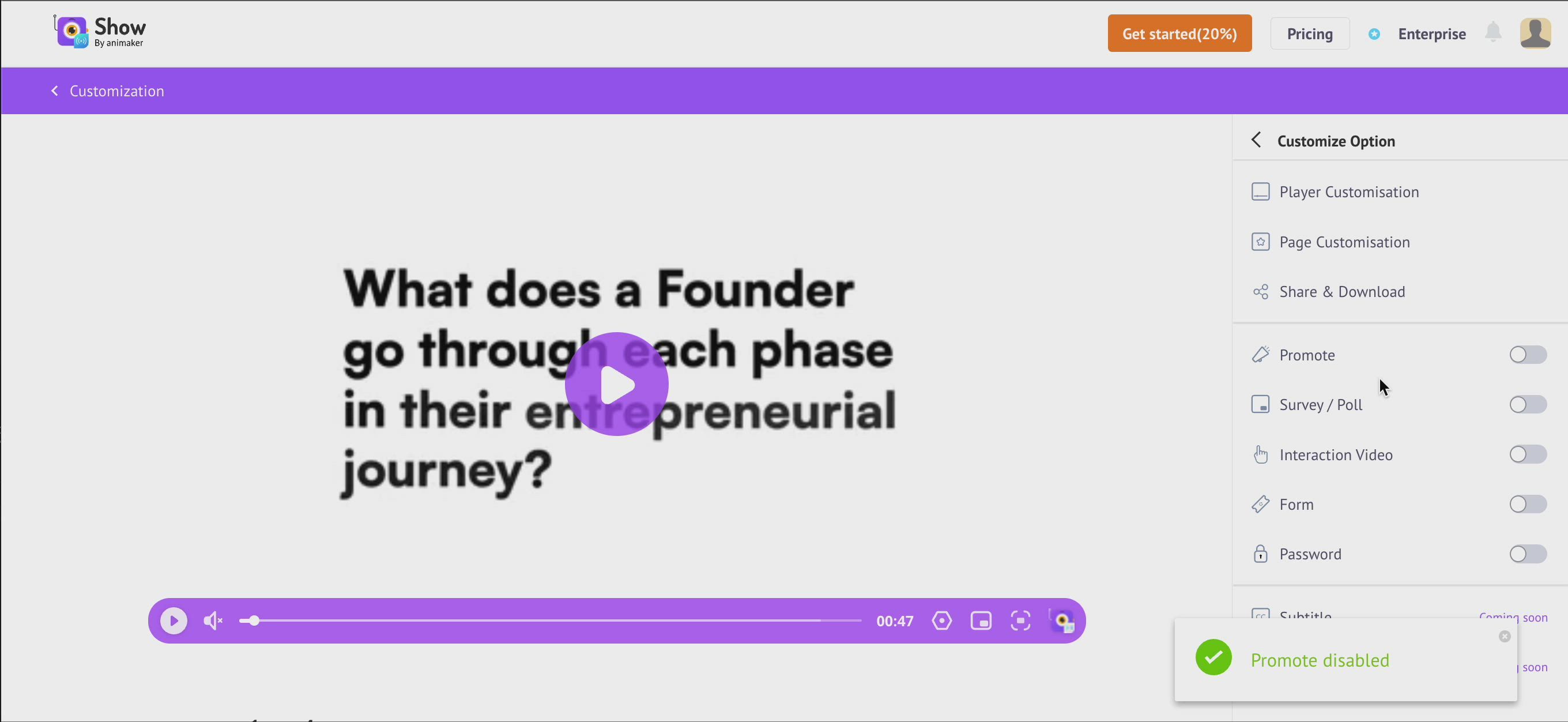Contents
1. Videos Give You Higher ROI Than Any Other Content Format
2. Interactive Learning Improves Employee Engagement
3. Easy To Measure The Effectiveness of the Content Created
4. Videos Connect With All Spectrum Of Employees
5 Reasons Why Creating Videos Will Pump Up The Employee Engagement Rate
Remember the time when you had to carry around the cash to shop for anything and if you run out of it, you had to return home without completing the shopping?
Remember the time when fuel prices or hikes never bothered you?
Remember the time when you had to make an ISD call and not just Facetime people?
A vague memory, right?
That’s exactly when organizations also used PDFs or held in-person conferences to train their employees. Gradually, they are now switching to videos. However, the shift might cost a fortune for the organizations with no deep pockets, so they are still on the fence.
Because they think that switching to videos will be highly expensive and require more human resources. In reality, it’s the opposite of all that and videos only amp up the employee engagement rate.
So, here we’ll discuss the hows, whys, and everything in between!
1. Videos Give You Higher ROI Than Any Other Content Format
Earlier, creating videos was only the experts’ task as it took a lot to create a simple 10-minute training video. From a studio-type setup to begin shooting the video to finding the pro editors to deliver on time, video creation was not everyone’s piece of cake.
So, most of the L&D team tilted towards the once easier option—PDFs. But not anymore!
It’s 2022 and with the easy-to-use tools in the market, there’s no limit to the kind of videos you can create. Also, video creation does not take as much time as it used to!
- Workplace learning videos can be as simple as a screen recording or animation video
- Even if the organization decides to create instructor-led videos, they are not difficult with advanced webcam recorders like Vmaker
- The videos allow you to track and analyze the employees' learning behavior (We’ll talk more about this in the next section)
So, when the toolkit is advanced and user-friendly, both creation and consumption are easy and yield results.
Creating videos with Vmaker Author takes you minutes and not hours. All you need to do is to decide on the type of video you want to create and hit the record button.
2. Interactive Learning Improves Employee Engagement
When you introduce video-based learning to your employees, you notice a spike in their involvement, engagement, and even information retention. This is because human brains process visual information 60,000 times more quickly than text content.
When it comes to workplace learning, helping your employees make time to sit for every training you schedule periodically is an uphill task. So, if you stack over 30 pages of PDFs or invite for in-person training might not turn fruitful. Moreover, recent studies from the SAVO group project that employees forget about 65% of the training content within the first 7 days post the training.

So, if you do not want all the efforts from both the L & D team and the employees to go in vain, then switching to interactive videos—which keep them hooked from the beginning to the end—is one of the best solutions.
Creating a 5 min log video and uploading it on the corporate YouTube channel is so in the past. With advanced LMS tools like Vmaker Train, one can add interactive elements like quizzes, polls, and even questions in between the videos. The video below shows you a sneak peek of how effortlessly you can make your videos interactive.
This creates an impact that the employees are not only passive listeners but also active participants.
3. Easy To Measure The Effectiveness of the Content Created
The second most important reason why videos get an edge over any other content format is that they can be tracked and analyzed. (However, the first important reason will always be the interactivity that videos offer)
A few ways how you can leverage the advantage of videos & analytics:
- Track the number of times a single employee has watched a video
- Use the heatmaps from Vmaker Train and analyze the most watched part of the video and even the most skipped part of the video
- Download, quantify, and analyze the assessments of the video within the LMS suite.
With Vmaker Train, you can get to the granular details on a single dashboard.
But you might ask why quantifying the effectiveness of the content delivered is important. If that question sprouted in your mind as well, that’s because—access to extensive analytics helps the L&D teams to understand their learners better and rewire their strategy to deliver more impactful content later on.
4. Videos Connect With All Spectrum Of Employees
Again, educating the employees is the core reason why organizations create content. Now, with GenZ entering the workforce and the millennials already making more than 35% of the US workforce shows us how diversified the workplace can get.
Millennials born from 1981 to 1996 and the GenZ born after 1996 are nowhere similar. Although the millennials have a lot more experience than the GenZ, the new gen in the workforce does not lag. More than 67% of the GenZ employees have responded to a survey saying they will work for companies that enable them to learn skills to advance their careers.
Now, the intersection between engaging both generations of employees with different working experiences is simple—employee engagement. To satisfy that, the organization has to deliver content that does not alienate the Millennials and also serves the content that GenZ is more used to.
This is exactly where videos fall in!
5. Repurposing Video Content Is Easier Than You Think
Repurposing the video content to build the employer brand—how does this sound? We say it’s the smart move to go that extra mile and make the best use of the training videos created for the employees.
But before you ask us — Yes, every training video material or the content that the L&D team creates is only for internal purposes. But the clever organizations around the world also leverage the content to their advantage.
An onboarding training video could’ve been a 15-page long PDF that people wouldn’t have bothered to read. But when the teams put in all the efforts to create a video, they can be skillfully repurposed.
For example, this video of the Hubspot Product Team could’ve been a part of the employee onboarding video series to introduce the “Life at Hubspot” side of it.
However, publishing this on YouTube gives an insider view of diversity, work culture, everyday conversations, and such for its audience as well—this is how the organizations build the employer brand as building blocks.
So, videos created for the employees can be repurposed into other platforms like social media, email marketing, and even landing pages as well.
A Quick Glance…
There’s no one way to pump up employee engagement in the workplace. So trying multiple content formats and types can help you build a better relationship with them. We’ve given you the long way short—which appeals to the right audience, right parts of the human brain, and also caters to the diversified workplace.
Recommended Reading:
What Is Video-Based Learning? (Benefits, Examples & Tips)
7 Reasons To Use Videos To Strengthen Your Internal Communication
12 Tips to Choose the Best e-learning Authoring Tool for your Business




